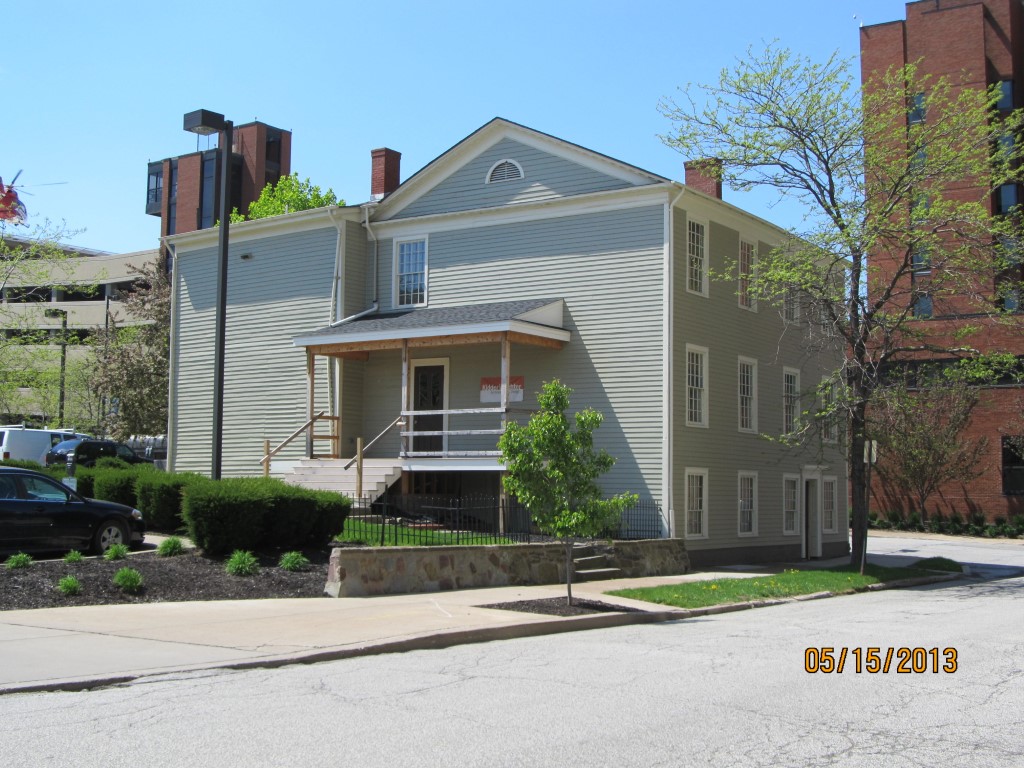The Dickson Tavern is considered the oldest standing structure in the
City of Erie. This three-story building is divided into two parts: a
north section that was built in 1815, and the south segment that was
constructed in 1841. The Dickson Tavern thrived at a time when Erie was
the center of shipbuilding and trade in the Great Lakes Region. As
people travelled into Erie and the resident population grew,
undoubtedly, the services of a tavern were needed.
John Dickson, a native of Baltimore who arrived to Erie in 1808,
acquired the land for the construction of the Dickson Tavern in 1814. A
year later, the tavern was opened for business. William Himrod, a
veteran of the War of 1812, as well as a carpenter, built the
structure. Himrod later opened a Sunday school for African American
children, which is son, William Himrod Jr., continued to operate after
his father’s death in 1873. It is speculated that William Sr. was a
station agent in the Underground Railroad. Himrod also embarked in
multiple business ventures, most notably the establishment of the
manufacturing company Johnson, Himrod, & Co, later renamed Vincent,
Himrod, and Co. This company later evolved into the Chicago & Erie
Stove Works and the Erie City Iron Works. With such humble beginnings,
Himrod became a key figure in the development of Erie’s iron industry.
At the same time, John Dickson was a pioneer in the hospitality
industry.
The Dickson Tavern was ultimately favored for its size, design, and
excellent location near the bay of Lake Erie. Dickson was considered an
excellent cook, which helped to establish the tavern’s superior
reputation. In 1818, the tavern advertised its menu, which included hot
coffee, hot and cold meats, pickled oysters, tripe, tongue and pastry,
ice cream, wedding cake, and punch. Alcoholic beverages were certainly
available as well. Beyond food and drink, the Dickson Tavern housed a
billiard table for customers and thrived on the comradery amongst male
patrons. By the 1820s, Dickson sought to appeal to the merchant and
business community. He changed the name of his tavern to the Exchange
Coffee House to attract these patrons. The name attracted wealthier
customers that were intrigued by this unique commercial name, and in
turn, Dickson could expand his business. Most notably, the Exchange
Coffee House entertained the French American Revolutionary War hero,
Marquis De Layfette, with a lavish party, during his visit to Erie in
1825. Dickson developed part of the tavern into a steam boat office,
providing carriage and boat rides to travelers. Despite this success,
in 1831, Dickson sold the tavern and moved to Pittsburgh, selling the
property to his brother-in-law, Daniel Gillespie.
Gillespie operated the tavern until 1834 when it was sold to Josiah
Kellogg, a merchant who later became the director of the Erie branch of
the United States Bank of Pennsylvania. To relieve himself of all debts
when the bank closed, Kellogg sold the tavern to John Rogers, a local
man, in 1841. Rogers expanded the structure to use the building as a
private residence. The exterior southern section of the building was
not well-blended into the original building’s design, but the interior
supported a uniform lay-out. The structure was used as a residence or
rental housing until 1924, when it was purchased by the City of Erie
and renamed Perry Memorial Hall. It was used to house a museum, which
ultimately prevented the building from being demolished.
Perry Memorial Hall was named after the Battle of Lake Erie’s most
revered hero, Oliver Hazard Perry. The building became a museum
dedicated to Perry and his navy. The interior of the museum was
remodeled between the 1920s through the 1960s to accommodate exhibits
and restrooms. After the museum closed in 2004, the property remained
vacant until 2009. In 2009, it was purchased by Kidder Wachter
Architecture & Design and was carefully restored and repurposed as
office space.
|
